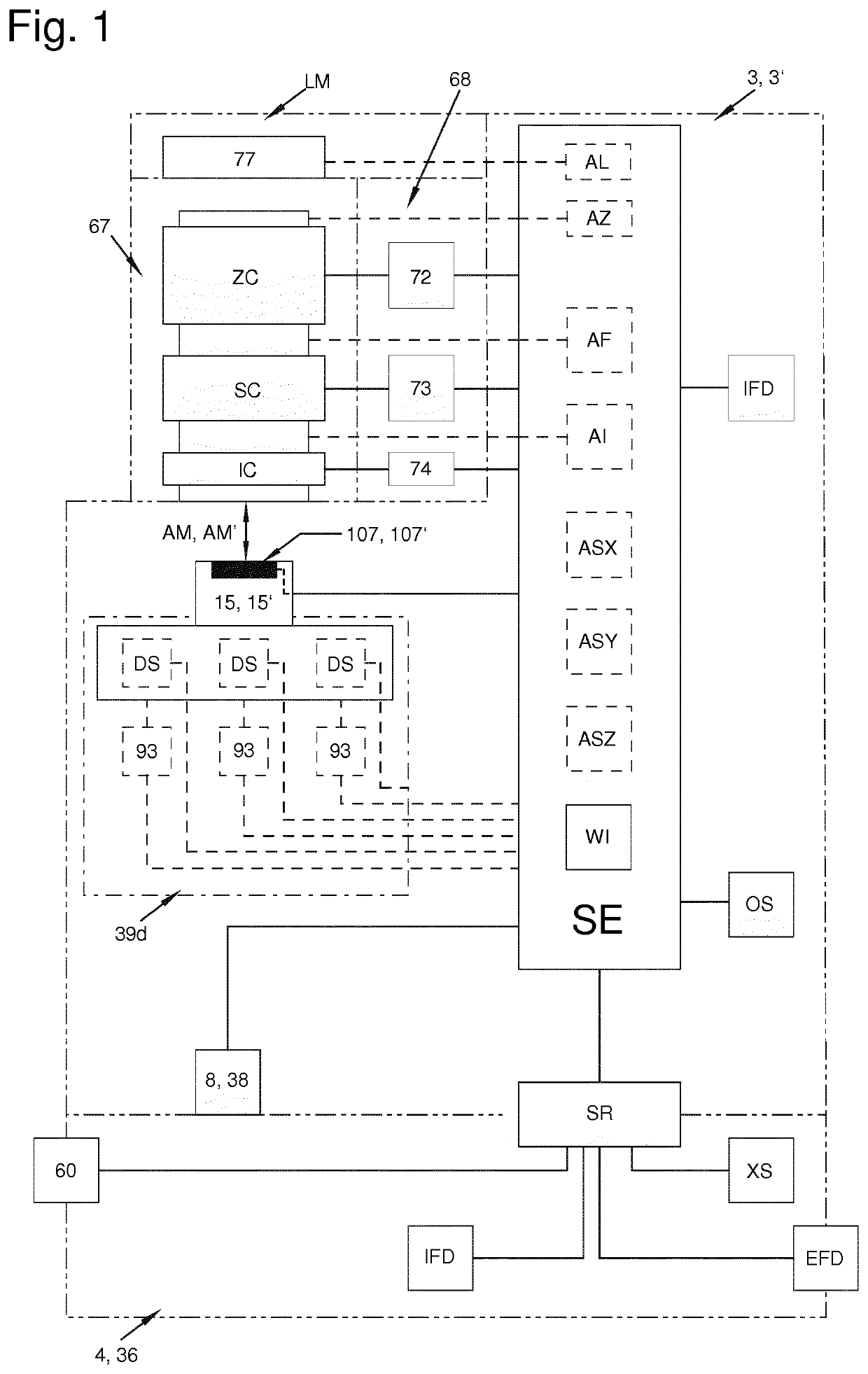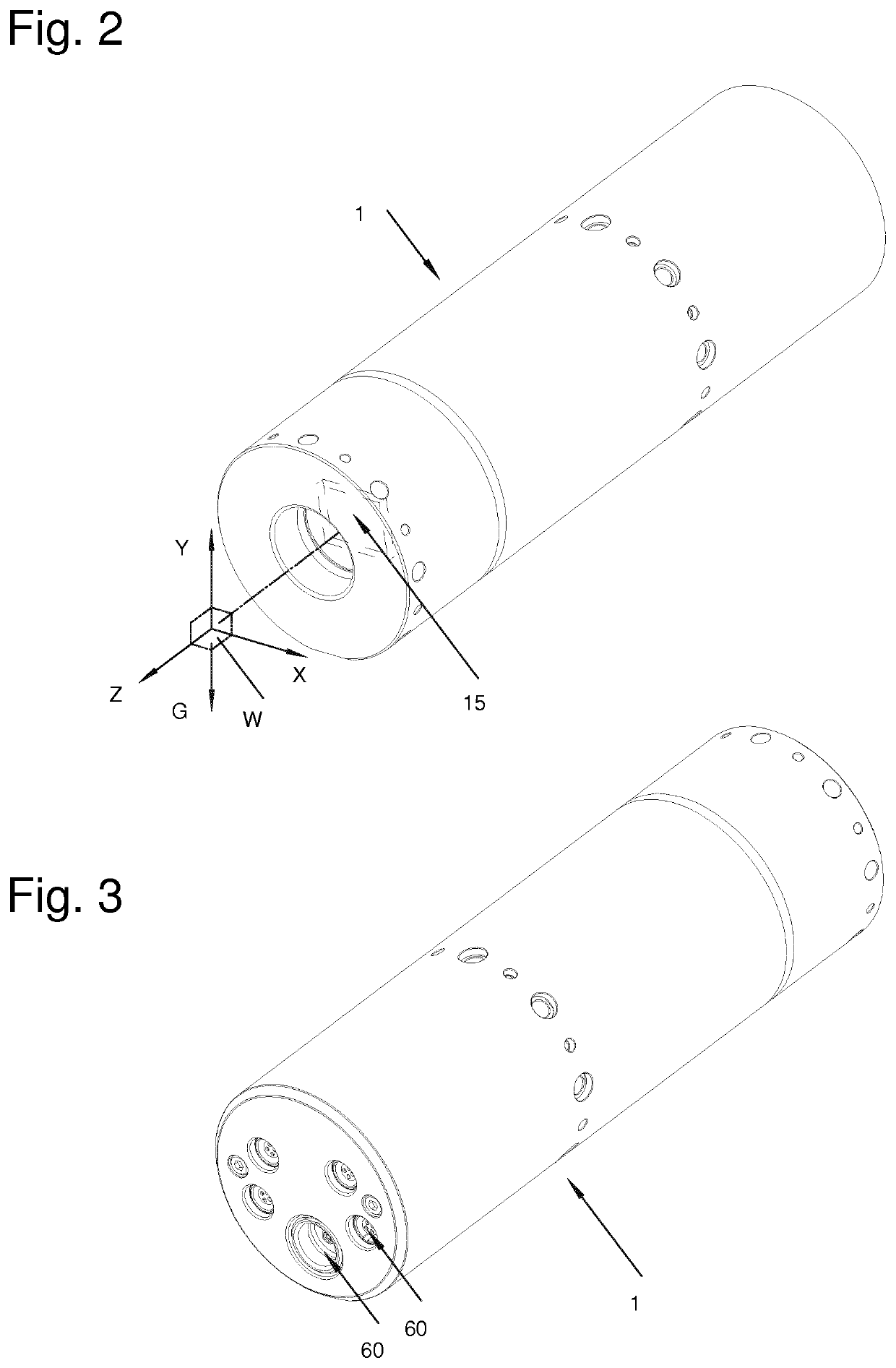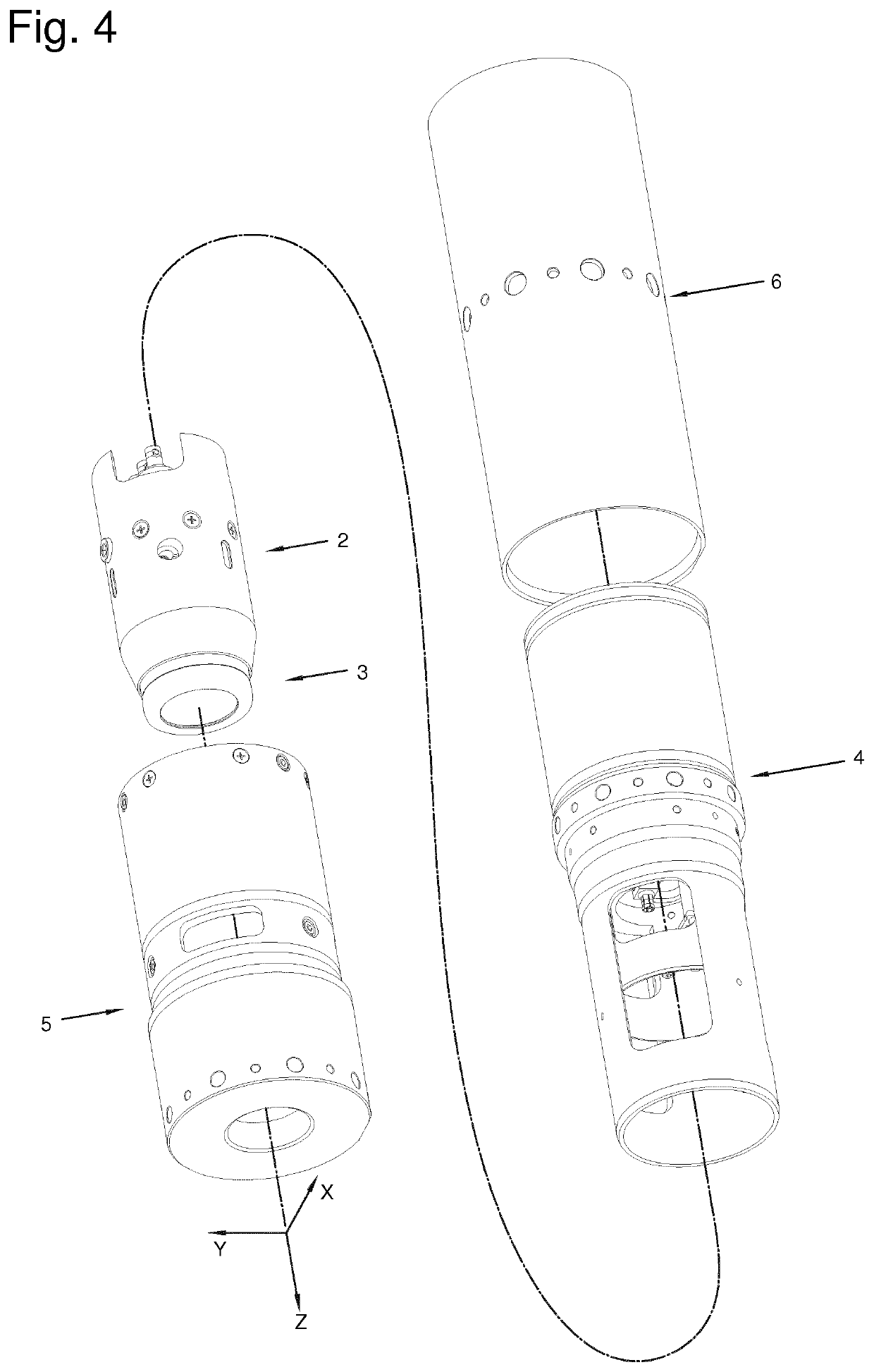A great
disadvantage of this method is an often very strong
cropping of the recorded image data which leads to the output format size in relation to the utilizable sensor surface being greatly reduced.
This structure is disadvantageous because additional play is introduced into the kinematic system by use of a
gear system for transmitting the rotation of the motor to the
image sensor.
Neither electronically nor by a sensor can this be remedied because the play leads to a permanent compensation attempt by the
electronics which means an increased basic
noise of the
position sensor data and, in addition, results in an increased
power consumption.
This is the reason for possible blurriness and bad
imaging quality, in particular in environments subject to vibrations.
Due to the friction-afflicted function of a
gear system, wear in the form of abrasion is to be taken into account in addition so that an increase of the problems is to be expected.
Since a sliding support, due to the physical principle of action, is however in principle also afflicted by play, movements cannot be guided precisely.
This play leads already for minor vibrations to an increasing precision loss by increased wear and abrasion.
In summary, it can be said that a sliding support, in
spite of a precise
mechanical system, represents an imprecise basis with great susceptibility to vibrations so that a permanent compensation work of the sensors and
mechanical system is to be expected, which leads to a precision loss and increased
power consumption.
Few inventions have recognized this problem and have integrated elements for pretensioning, but embodied so greatly miniaturized or locally limited that an optimal technical effect is not obtained.
This must be considered disadvantageous for the kinematic or mechanical system.
These technical realizations lead to the
sensor plane not being uniformly pretensioned which is additionally reinforced by manufacturing tolerances.
Material and geometry and the minimal number of rolling body bearing seats, in addition to a very limited movement range, lead also to a non-uniform support of the
image sensor plane.
In case of occurring vibrations and impacts, a bad
imaging quality and blurring may occur due to the afore mentioned embodiments.
The reason for this lies in tilting and / or displacement of the
sensor plane relative to the
imaging lens system due to a weak non-uniform pretension and support.
This has the
disadvantage that (direction-dependent) a
spring force counteracts the corrective movements of the sensor surface and must be overcome.
This makes it necessary to employ, on the one hand, actors of larger dimensions and also leads to a
higher power consumption during operation.
In any case, in these systems the rotational movement can be considered as being impaired because it is hindered or prevented by an unfavorable mechanical structure at all times. In addition, an abrasion of the stop surface is created due to the resulting friction between spring and spring stop surface.
In particular, the unfavorable kinematic and mechanical structure and the lack of play-compensating components are to be emphasized likewise as being disadvantageous, as described above.
It must be added that all examined and described systems which contain corrective units for compensation of vibrations and slanted positions are not capable of adjusting retroactively the distance of the imaging surface to the imaging optical system (lenses etc.) or the
support surface of the lens.
Therefore, neither
settling effects, manufacturing tolerances, and wear can be compensated nor is it possible to precisely (re)adjust the
flange focal distance.
The result is an increasing blurring of the recorded images.
Accordingly, the position of the optical elements relative to each other cannot be changed which results in a fixed focus and sharpness.
An
adaptation to external environments, e.g. interchangeable lenses, is thus not possible.
The lack of a mechanical pretension however leads to bearing play in axial direction relative to the
imaging lens system.
During a corrective movement, the distance of the
image sensor to the optical system may change which, in addition to a non-smooth movement, leads to changing blurriness which, under the influence of external vibrations and impacts, may increase in intensity.
This represents a great
disadvantage because, on the one hand, the
mass inertia of this imaging system requires significantly greater actors compared to systems that must only move the imaging unit.
On the other hand, this structure is to be considered as being sluggish, in particular for fast corrections with long travels and rotations, which makes impossible a compensation of vibrations and slanted positions in real time.
This would result in a further increase of the total weight to be moved for a correction.
In addition to an enlargement of the external dimensions of the whole system, an increasing sluggishness of the corrective movement and the need for even larger actors would result therefrom.
Finally, the fixed, non-detachable connection of the imaging optical system with the image sensor prevents the modular
adaptation of the optical elements to different light conditions and requirements.
It is not possible to attach further lenses by means of an interface (bayonet
mount).
However, all of these systems, which are provided with a bayonet
mount and comprise additionally electromechanical units for compensation of vibrations and slanted positions, have no pretensioned support which moreover is not capable of correcting complete rotations.
Also, none of these systems enables the retroactive precise adjustment of the
flange focal distance between image sensor surface and bayonet
mount connecting flange.
In particular, all camera systems based on so-called flex-rigid printed circuit boards have no integrated precise mechanical system, secured against rotational release in accordance with current standard, for (retroactive) adjustment and fixation of the flange focal distance.
Systems in which the imaging unit is connected fixedly with a bayonet mount and is mechanically supported as a unit are subjected to comparable problems and disadvantages as described above.
Moreover, it can also happen in this context that large and heavy lenses must be used.
Also, functional component groups for adjustment of
zoom and focus must be additionally attached externally on the entire imaging system which may lead to the internal corrective drive to be dimensioned too weak for performing a complete corrective movement (in real-time) of the entire imaging system.
The search in regard to prior art in this respect has found that such systems (compare publication Nos. 40-44) are sometimes very large and bulky.
Here, no protection of the moved elements (e.g. the camera platform or camera head) exists so that impairments of the free corrective movement by external influences cannot be prevented, which may lead to complete blockage.
All systems with an integrated electromechanical
correction system that enable a compensation of at least one complete rotation have an unfavorable kinematic and mechanical structure and lack play-compensating components.
In particular the omission of a pretensioned support in combination with a play-afflicted mechanical system leads to neither being able to guarantee a defined position of the image sensor nor being able to compensate manufacturing tolerances,
settling effects, and wear, which has the result of a non-smooth movement and increasing blurriness of the recorded images.
Moreover, the extremely limited movement range of almost all of the correction systems is based on the use of local coils in combination with permanent magnets, piezo actors or locally movement-limited support so that these published camera systems with corrective mechanical structures do not enable a complete rotation.
The use of friction-afflicted and partially non-uniform support of optical components reinforces these problems by the tendency to increased wear and additional play.
Not least, the lack of elements with which the distance of the image sensor to the
imaging lens system can be calibrated and readjusted, in particular in systems, that enable by means of a bayonet mount the use of interchangeable lenses, prevents the precise adjustment of the flange focal distance and thus of the sharpness of the recorded images.
 Login to View More
Login to View More  Login to View More
Login to View More 


